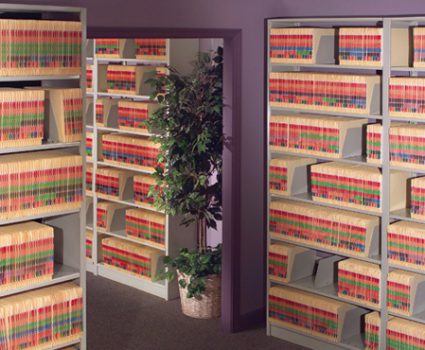
Color-Coding (Part 3): Retention and disposition headaches? Add a splash of color!
In a four-part blog series, we are focusing on color-coding. In part one we discussed the color-coded file folder and in part two we looked beyond the obvious and immediate benefits of color-coding.
In this post we reveal how color-coding makes it easier to meet requirements for records retention and disposition – and avoids risk in the process.
Meeting legal requirements for records retention and disposition is one of the most difficult challenges facing records managers today. The challenge starts with a complex and shifting set of requirements.
|
While some retention requirements are listed explicitly in the legislation, many others are not. In the absence of clear and explicit guidelines you need to consider a host of other factors, such as the possibility of legal action, the applicable statute(s) of limitation and requirements for customer access to personal records.
This uncertainty is compounded by the fact that the requirements are continually changing with the introduction of new legislation and amendments to existing laws. Throw in the possibility of severe consequences for non-compliance and it is easy to see why retention and disposition are so difficult – and so important to get right.
Color-coding to the rescue
A well-researched classification and retention schedule is the first step of any good retention and disposition plan. But what’s next? How do you ensure that the plan is applied regularly and consistently? There are many tools to help you do that, such as an electronic records management system, which automatically flags electronic records for easy disposition.
However, it is not always so straightforward when it comes to paper records. This is where color-coding can prove invaluable.
|
By helping you identify files more clearly, color-coding delivers a number of benefits for retention and disposition. First, it reduces the risk of mistakenly destroying a file. During an annual purge, a break in the color pattern helps you instantly spot an out-of-place file – whether your files are stored on shelves or packed into cartons for pick-up by a secure disposal service provider.
Color-coding also makes the retention process itself easier and more efficient. For example, if records are disposed of on an annual basis, an entire year’s worth of files may be eligible for destruction at once. Helping staff to quickly identify eligible files in large blocks.
By making it easier and faster to carry out disposition, color-coding reduces the likelihood that the process will get put off (which happens all too often). The overall benefit is that records retention periods are applied in a more accurate and timely fashion, mitigating the compliance risks associated with both insufficient and excessive retention.
Stay tuned for part four when we look at how color-coding helps you meet requirements for privacy and information security.





